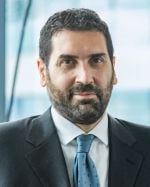
What were EDHEC-risk’s top 10 most read articles in 2021?
Written on 23 Dec 2021.

A year in research: focus on retirement investing (goal-based investing, diversification, insurance, precision investing) and sustainable investing (climate change, ESG risks, SRI, greenwashing)
As we enter a new year, EDHEC-Risk Institute takes a look back at the most read articles in 2021, covering a diverse range of topics that are at the heart of its expertise.
#1 From Climate Change to Asset Prices

The last ten or so years have seen a sea change in the degree of engagement of the financial and investment communities with climate change. There have been innovative ideas to finance the (massive) investment required to build renewable sources of energy to scale or establish carbon sequestration and negative-emission technologies. There has also been a strong commitment by many asset managers to disinvest from carbon-emitting sectors, and to invest in green industries, thereby shifting, it is hoped, the relative cost of capital. Some major sovereign investment funds have taken resolute steps in this direction as well. And, with more and more insistence, investors have begun to ask the existential question of whether it is indeed possible to do well while doing good.
By Riccardo Rebonato, Professor of Finance, EDHEC-Risk Institute, EDHEC Business School
#2 Diversification and Insurance: Which Should Come First?

Modern portfolio theory suggests that the complex problem of investor welfare maximization subject to various constraints is best handled by jointly using three forms of risk management : diversification, hedging and insurance This discussion raises the following question: if diversification and insurance (i.e., dynamic hedging) are not mutually exclusive techniques, is there an optimal order for them to be performed? Put differently, is it better to diversify a portfolio of insured payoffs or to insure a diversified portfolio? Since insurance has an opportunity cost, which takes the form of a limited participation in the upside of the PSP in favorable scenarios, compensating for the downside protection in unfavorable scenarios, and since diversification has no cost, intuition suggests that it should be more efficient to costlessly diversify away unrewarded risk before insuring the resulting portfolio at a cost. This lower opportunity cost is reflected in the lower price of the put option that protects against downside risk if the volatility of the underlying asset has been reduced first by diversification.
The research from which this article was drawn was produced as part of the EDHEC-Risk Institute/FirstRand research chair on “Designing and Implementing Welfare-Improving Investment Solutions for Institutions and Individuals”.
By Nicole Beevers, Quantitative Strategist at Rand Merchant Bank, a division of FirstRand Bank Limited, Hannes Du Plessis, Quantitative Strategist at Rand Merchant Bank, a division of FirstRand Bank Limited, Lionel Martellini, Professor of Finance, EDHEC Business School, Director, EDHEC-Risk Institute; and Vincent Milhau, Research Director, EDHEC-Risk Institute
#3 Measuring and Managing ESG Risks in Sovereign Bond Portfolios

Over the past decade, sustainable and responsible investing have gained momentum and continue to grow in popularity among investors, and it is increasingly recognized that the financial system has a particularly important role to play in the transition towards a low-carbon and climate-resilient economy.The integration of sustainability considerations into the decision-making process for investments, as measured by Environmental, Social and Governance (ESG) indicators, has been driven by investor demands, fiduciary duty, climate change and the development of new regulations and values. Sustainability in the financial sector is becoming mainstream and is reshaping global markets. In a recent paper, we explore the impact of ESG factors on the risk and return of sovereign bonds from an investor perspective, in particular investigating how to measure and manage EGS risks in sovereign bond portfolios and their implications for sovereign bond portfolio strategies.
The research from which this article was drawn was produced as part of the Amundi ETF, Indexing and Smart Beta Investment Strategies research chair at EDHEC-Risk Institute.
By Lionel Martellini, Professor of Finance at EDHEC Business School and Director of EDHEC-Risk Institute; Lou-Salomé Vallée, PhD Candidate in Finance and Teaching Assistant at EDHEC Business School.
#4 Investing in Times of Covid
 If an investor did not know the meaning of the word COVID, and could only observe the level of the S&P500 in January 2020 and one year thereafter, she could be forgiven for thinking that COVID must be something very good for the economy, as over this period the index climbed from 3,200 to above 3,800. And if she still harboured any doubts, she could check the BofA High-Yield index, which stood at 5.23% one year ago, and, as I write, hovers below 4.5%. Definitely, this COVID thing must not only be good for the economy but also make corporate balance sheets more solid.
If an investor did not know the meaning of the word COVID, and could only observe the level of the S&P500 in January 2020 and one year thereafter, she could be forgiven for thinking that COVID must be something very good for the economy, as over this period the index climbed from 3,200 to above 3,800. And if she still harboured any doubts, she could check the BofA High-Yield index, which stood at 5.23% one year ago, and, as I write, hovers below 4.5%. Definitely, this COVID thing must not only be good for the economy but also make corporate balance sheets more solid.
Alas, we know better – but the task of explaining the prices of assets is not made any easier by our knowledge of what a coronavirus is. Western economies have seen a precipitous drop in GDP, individuals and corporates are being saved from bankruptcy by various government aid schemes, and governments are more indebted than they ever were in peace times. So why are assets so optimistically priced? We teach our students that prices reflect expected cashflows, discounted so as to account for risk. Since prospects for cashflows must be worse than they were a year ago, and uncertainty must have increased, why have prices not just held up, but positively rallied?
By Riccardo Rebonato, Professor of Finance, EDHEC-Risk Institute, EDHEC Business School
#5 What Impact Should We Expect From Socially Responsible Investing
 I apply the general equilibrium framework of EDHEC’s Prof. Laurent Calvet to the case of socially responsible investing. I show that it need not be the case that investors must sacrifice returns to invest responsibly. I also show that responsible investors do best, and have the most impact, when they fully integrate their sustainability beliefs into their investment processes. Socially responsible investing continues to be one of the fastest growing topics in finance.
I apply the general equilibrium framework of EDHEC’s Prof. Laurent Calvet to the case of socially responsible investing. I show that it need not be the case that investors must sacrifice returns to invest responsibly. I also show that responsible investors do best, and have the most impact, when they fully integrate their sustainability beliefs into their investment processes. Socially responsible investing continues to be one of the fastest growing topics in finance.
With the ongoing implementation of the EU’s sustainable finance plan, significant developments are set to continue and we are likely to see increasing standardization over the coming decade. Hence, it seems valuable to take a moment to reflect on what the impacts of sustainable investing are likely to be and how they can be made as positive as possible. Not least because EDHEC's motto is 'make an impact'.
By Jonathan Harris, Director, Total Portfolio Project and EDHEC-Risk Associate Researcher, PhD in Finance Alumnus, EDHEC Business School
#6 A Case Study in Real Assets Investing: the French Non-Listed Real Estate Fund Market

Real estate has become an essential part of institutional investment portfolios and is now established as a source of diversification and added value in the context of multi-class portfolio construction. However, achieving efficient real estate exposure in practice has often been a challenge because of the main distinctive/idiosyncratic features of the asset class: no liquid market exists for an individual real estate asset, property management is a large contributor to performance, and specific risk is a large contributor to overall risk. Finally, diversification (geographic or by property type) can be challenging for it can hinder economies of scale in property management
In a recent paper, we analyse whether traditional investment management techniques such as fund selection and portfolio allocation can be applied to the SCPI fund universe and create value for investors. Our analysis focuses specifically on SCPIs with the longest track record, invested in commercial real estate.
The research from which this article was drawn was produced as part of Swiss Life Asset Managers France “Real Estate in Modern Investment Solutions” research chair at EDHEC-Risk Institute.
By Shahyar Safaee, Research Director and the Head of Business Development at EDHEC-Risk Institute
#7 Active Ownership as a Tool of Greenwashing
 When asset managers are criticized for the vast greenwashing happening in financial markets (Amenc et al., 2021), the answer is often that greenwashing is only an issue for passive investments, while active strategies – particularly active ownership – can fix all these problems. Investors preoccupied with climate change can be “active owners” and influence the carbon footprint of investee companies by voting at shareholder meetings on climate-related issues and by actively engaging with executives and board members. We study to what extent institutional investors’ ownership affected corporate carbon emissions in 68 countries for the period from 2007 to 2018 and find that institutional investment on average does not appear to lead to any tangible carbon footprint reduction.
When asset managers are criticized for the vast greenwashing happening in financial markets (Amenc et al., 2021), the answer is often that greenwashing is only an issue for passive investments, while active strategies – particularly active ownership – can fix all these problems. Investors preoccupied with climate change can be “active owners” and influence the carbon footprint of investee companies by voting at shareholder meetings on climate-related issues and by actively engaging with executives and board members. We study to what extent institutional investors’ ownership affected corporate carbon emissions in 68 countries for the period from 2007 to 2018 and find that institutional investment on average does not appear to lead to any tangible carbon footprint reduction.
By Gianfranco Gianfrate, Professor of Finance, EDHEC Business School, and Sustainable Finance Lead Expert, EDHEC-Risk Institute
#8 Climate Change Finance : The Big Picture

The transition towards a low-carbon economy will require profound innovations in the way the global financial system manages climate-related risks. The initiatives to enhance the transparency of climate exposures of banks and asset managers are only the first step in the process of making the financial system resilient to climate risks. However, financial markets do appear to lack the tools and instruments needed by investors and financial intermediaries to effectively deal with climate risks. Policymakers should create the conditions to facilitate climate–related financial innovations.
As climate change and global warming are addressed by tougher regulation, new emerging technologies, and shifts in consumer behaviors, global investors are increasingly treating climate risks as a key aspect when pricing financial assets and deciding the allocation of their investment portfolios. So far, the main focus of institutional investors has been on whether policies on carbon emissions will strand the assets of investee fossil-fuel companies. For example, the Norwegian sovereign wealth fund – one of the largest institutional investor globally – announced in November 2017 dropping its investments in oil and gas stocks.
By Gianfranco Gianfrate, Professor of Finance, EDHEC Business School, and Sustainable Finance Lead Expert, EDHEC-Risk Institute
#9 Precision Investing

Precision medicine, a novel model that proposes the customization of healthcare, with treatments, practices or products being tailored to a subgroup of patients, instead of a one-drug-fits-all model, is widely regarded as a fundamental breakthrough that will mark the start of a whole new era for medical practice. In the same spirit, one could argue that investment management is justified as an industry only to the extent that it can demonstrate a capacity to add value through the design of dedicated and meaningful investor-centric investment solutions, as opposed to one-size-fits-all manager-centric investment products. In this context, and to emphasize the parallel with what we are seeing in the healthcare industry, the term precision investing can be used to describe this trend from generic products to personalized solutions in investment management.
By Lionel Martellini, Professor of Finance at EDHEC Business School and Director of EDHEC-Risk Institute
#10 A Holistic Goals-Based Investing Framework for Analysing Efficient Retirement Investment Decisions
 We present a flexible framework developed to provide personalised advice on retirement investment decisions in the presence of life event risk. This article shows an application of this framework in a simple setting with two assets, a 50%/50% stock/bond balanced fund and an immediate annuity with a 2% COLA indexation. The analysis presented here can be extended in a number of directions involving the use of alternative welfare functions or the introduction of additional assets such as target date funds or variable annuities. We refer the interested reader to Maeso et al (2020) for more details on these extensions.
We present a flexible framework developed to provide personalised advice on retirement investment decisions in the presence of life event risk. This article shows an application of this framework in a simple setting with two assets, a 50%/50% stock/bond balanced fund and an immediate annuity with a 2% COLA indexation. The analysis presented here can be extended in a number of directions involving the use of alternative welfare functions or the introduction of additional assets such as target date funds or variable annuities. We refer the interested reader to Maeso et al (2020) for more details on these extensions.
The research from which this article was drawn was supported by Bank of America.
By Jean-Michel Maeso, Senior Quantitative Researcher, EDHEC-Risk Institute; Lionel Martellini, Professor of Finance, EDHEC Business School, Director, EDHEC-Risk Institute; Vincent Milhau, Research Director, EDHEC-Risk Institute; Anil Suri, Head of Investment Analytics, Merrill Lynch Global Wealth Management Group, Bank of America; Nevenka Vrdoljak, Director of Retirement Strategies, Merrill Lynch Wealth Management, Bank of America
Stay tuned on our website to be informed on EDHEC-Risk future research

